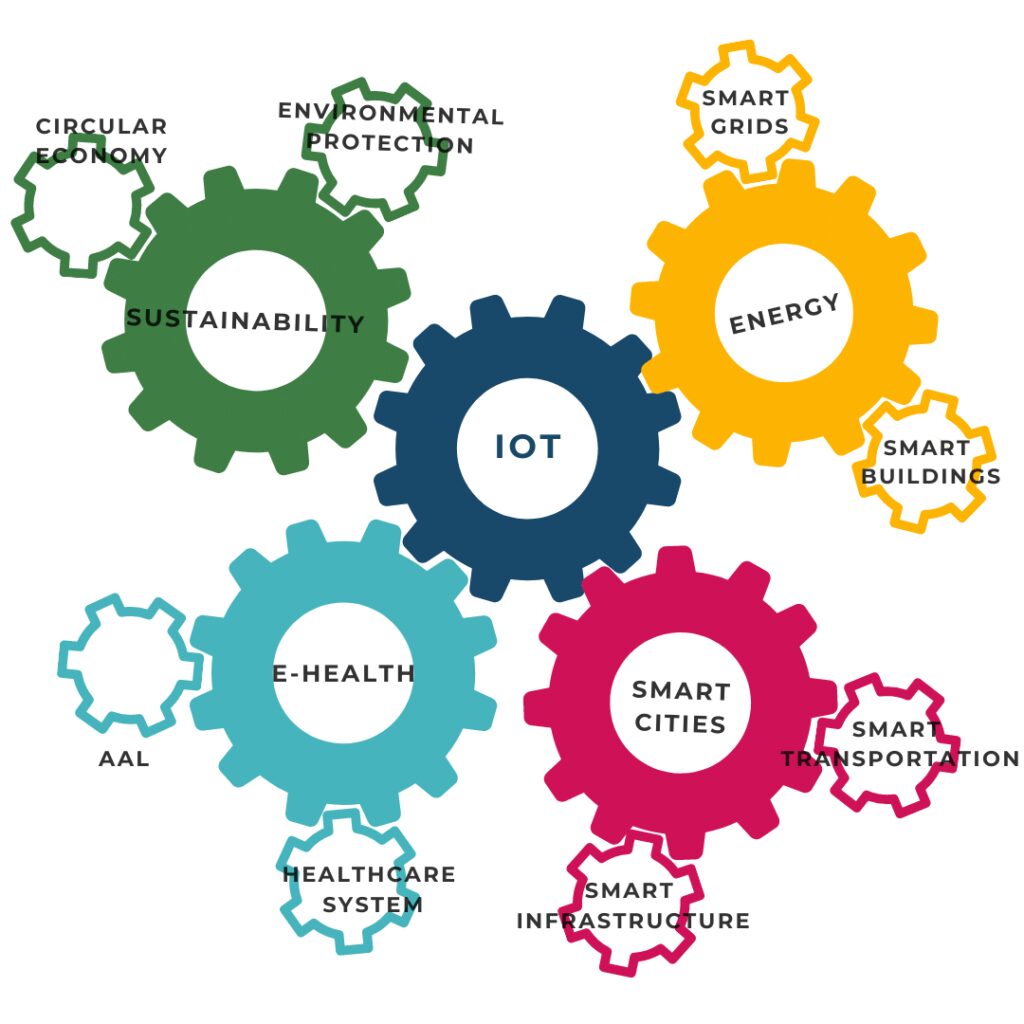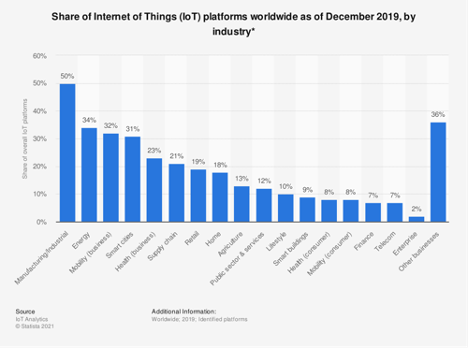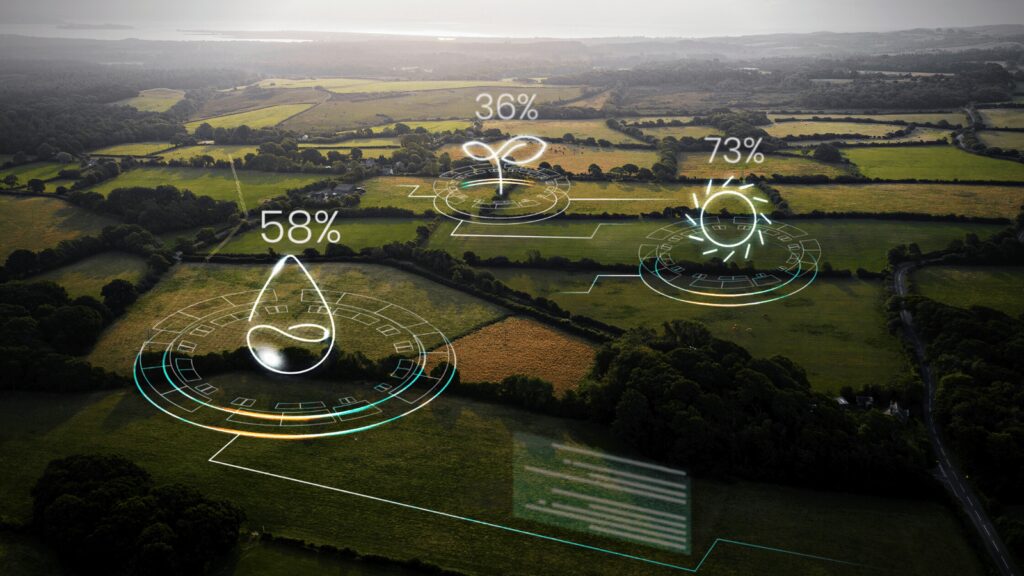Our world is more interconnected than ever before. This opens up limitless possibilities for transforming our world for the better
There has been a lot of discussion concerning the harmful effects of connected devices. From flaws in security to privacy issues, critics’ voices only seem to get louder as more gadgets become commonplace in modern life. What many people fail to see, however, is the immense potential for good that the Internet of Things has.
RELEVANT SUSTAINABLE GOALS



Without realizing it, the Internet of Things (IoT) has been infused into our daily lives, such as a thermostat that automatically adjusts temperature and a smartwatch equipped with sensors to detect our footsteps. In fact, consumers are more connected than ever before; the typical consumer has four IoT devices that interact with the cloud. Every second, an estimated 127 new devices connect to the Internet in some part of the world. By 2025, according to a projection by the McKinsey Global Institute, the Internet of Things may have an annual economic effect of $3.9 trillion to $11.1 trillion across a wide range of settings, including industries, cities, retail environments, and the human body.
IOT Tech Innovation For Social Good
What roles has IoT played in our lives and the environment? According to the World Economic Forum’s study on IoT Guidelines for Sustainability, the Internet of Things is unquestionably one of the most significant facilitators of responsible digital transformation. Apart from generating commercial profit, it also promotes sustainable and environmental initiatives and projects to combat climate change. The World Economic Forum research says IoT initiatives may assist in achieving the UN’s 17 Sustainable Development Goals (SDGs). Among them include eradicating global poverty, feeding hunger, ensuring clean water, combating climate change, and improving industrial efficiency. Let’s take a look at a few ways IoT help achieve Sustainable Development Goals.

ENDING HUNGER
We are confronted with the harmful effects of global climate change, and the pressing need to feed a world population predicted to exceed 9.1 billion people by 2050. According to a United Nations Food and Agriculture Organization, farmers must raise food production by 70% over 2007 levels to fulfill the growing population’s demands, and they must do so sustainably and profitably. Despite the enormous growth in the worldwide population, the number of hungry people has decreased by more than 200 million since the early 1990s, mainly to the joint efforts of governments, local and international organizations. However, we are still far from achieving our vision of a world without hunger.
According to a recent study by the UN, between 720 and 811 million people will go hungry in 2020. Africa and Southeast Asia are particularly hard hit, exacerbated by the worldwide pandemic and climate change. Over half a billion Asians, or 14% of the population, are undernourished, higher than the combined number of undernourished in Africa. And yet, the world actually generates enough food to feed every person on the earth. The Potsdam Institute in Germany found in 2016 that in 2010, the globe produced 20 percent excess food than was needed to feed everyone. According to current projections, this surplus will more than double by 2050.
Southeast Asia, which is home to some of the world’s top agricultural exports, relies on technology to meet these enormous challenges. An important driver behind new agricultural innovations is the Internet of Things (IoT), which can provide farmers with unprecedented levels of automation and intelligence. East-West Seeds Philippines is one of the organizations collaborating with Wyld Networks to collect essential data from vegetable farming in South East Asia to develop sustainable seed production for farm and research contexts.
Food insecurity is a global issue that will take time to resolve. However, the high rate of innovation among Southeast Asia’s food tech and other food tech in the world brings us closer to altering how we utilize the earth and feed its people.
CLEAN WATER AND SANITATION ACCESS
Globally, billions of people have gained access to water and sanitation services and improved hygiene habits. However, only in the last decade have some governments upped their commitments and investments in water, sanitation, and hygiene (WASH). Despite this significant improvement, there is still a long way to go. According to UNICEF, more than 600 million of the world’s open defecators reside in South Asia. Poor hygiene and lack of clean water services are the primary causes of child mortality and morbidity.
Since 1990, access to better water has risen from 73% to 93% in South Asia. But over 134 million people still lack access to safe drinking water. According to recent estimates, 68% to 84% percent of South Asian water sources are contaminated. Water scarcity has impacted several Indian metropolitan areas, including Delhi, Bengaluru, Chennai, and Hyderabad. It’s estimated that over 40% of Indians won’t have access to clean drinking water by 2030.
A Smart Water Network & system is presently being built to solve the challenges of water scarcity, quality, and usage through SCADA & IoT Technologies in India. SCADA and IoT technologies should be utilised to save and maintain water quality for people and build a sustainable and scalable water economy for water utilities. The country’s water utilities require innovative technology to deliver such services to residents and shift cultural and conventional thinking processes.
CLEAN, RENEWABLE AND AFFORDABLE ENERGY
Across the world, affordable and sustainable energy is being worked on, but much more has to be done in the 2020s. With renewables accounting for just 17 percent of the global energy system, over 840 million people continue to live without power, decreasing from 1 billion in 2016 and 1.2 billion in 2010. Wind, solar, hydropower, geothermal power, and biomass energy are expanding in popularity as the world moves away from fossil fuels. IoT facilitates this transition by increasing efficiency and automating processes.
When it comes to the production of sustainable energy, automation is very crucial to consider. The Internet of Things (IoT) may assist in identifying the most appropriate circumstances for energy production in the wind or solar energy, and they can also automatically adjust the direction of turbines or solar panels. The use of devices and their data for the monitoring and effective operation of these power generators allows for maximum efficiency, resulting in increased power production while running expenses are reduced. Not only does the Internet of Things provide more effective operation management in this manner, but it also increases the overall safety of the facility.
Maintenance for clean energy systems is much enhanced due to the Internet of Things, just as it is in the case of more dependable water sources. When energy production plants are spread, and social distance is required, remote asset monitoring and management are made possible by sensors installed at the energy production generation, transmission, and distribution stages. Meanwhile, new insights into voltage regulation, load switching, and network setup make it possible to improve load management. Ensuring that everyone has access to inexpensive, dependable, and sustainable energy demands new efficiencies, which are being made feasible by the Internet of Things.
The Asia-Pacific area, particularly China and India, with their significant energy producers and consumers, is critical for global decarbonisation. If it is successful in making energy supply structures more environmentally friendly, global warming will be halted.

There is still more to be done in terms of IoT and Sustainable Development Goals. According to the World Economic Forum, 75% of IoT initiatives are small or medium-sized and are working on the emphasis on industry, energy efficiency, sustainable energy, health, and responsible consumption.
The worldwide impact from COVID-19 has put the Sustainable Development Goals (SDGs) on the map. They were significant before the outbreak of the epidemic, but they are far more so today. In the aftermath of the epidemic, basic human necessities such as hunger, thirst, and energy have become even more acute. In the face of an uncertain recovery, action must be done, and linked devices and multi-purpose sensors provide a means to do so. With careful planning and implementation, the Internet of Things can improve the lives of countless people.
Also Read :
Hack For Future With Startup Weekend Global 2021


